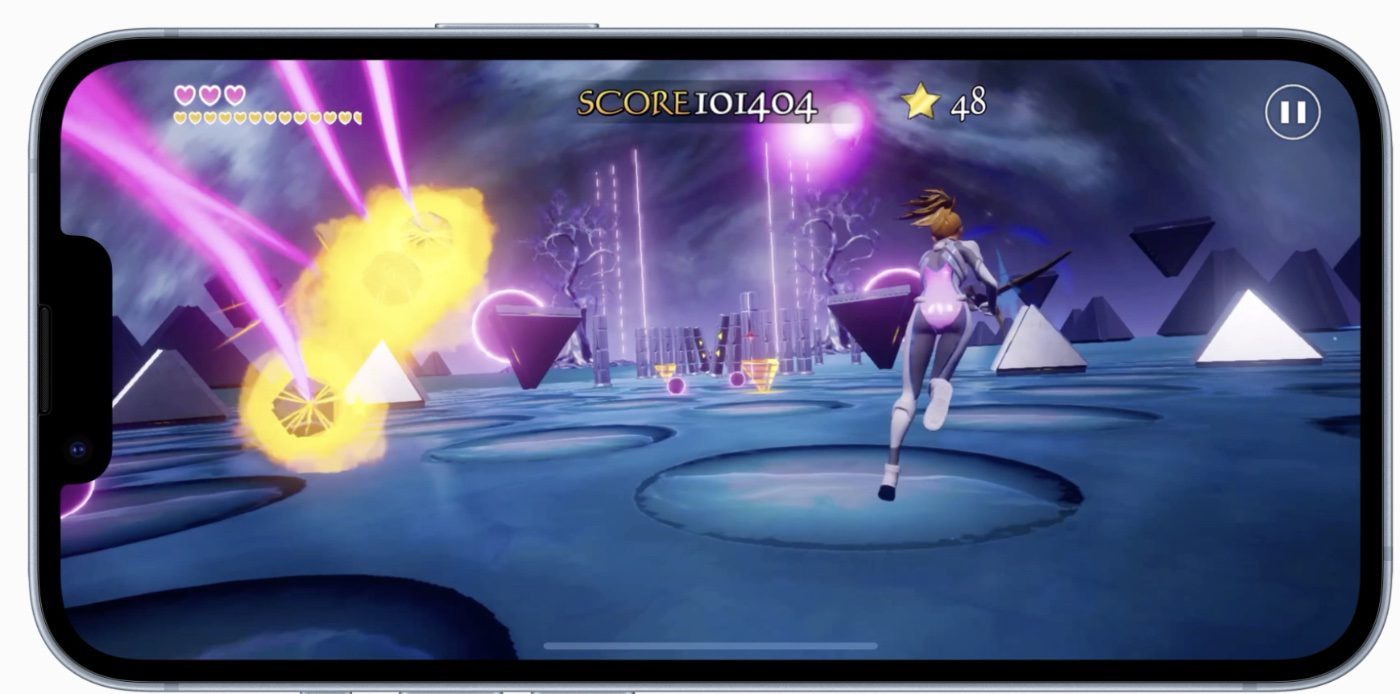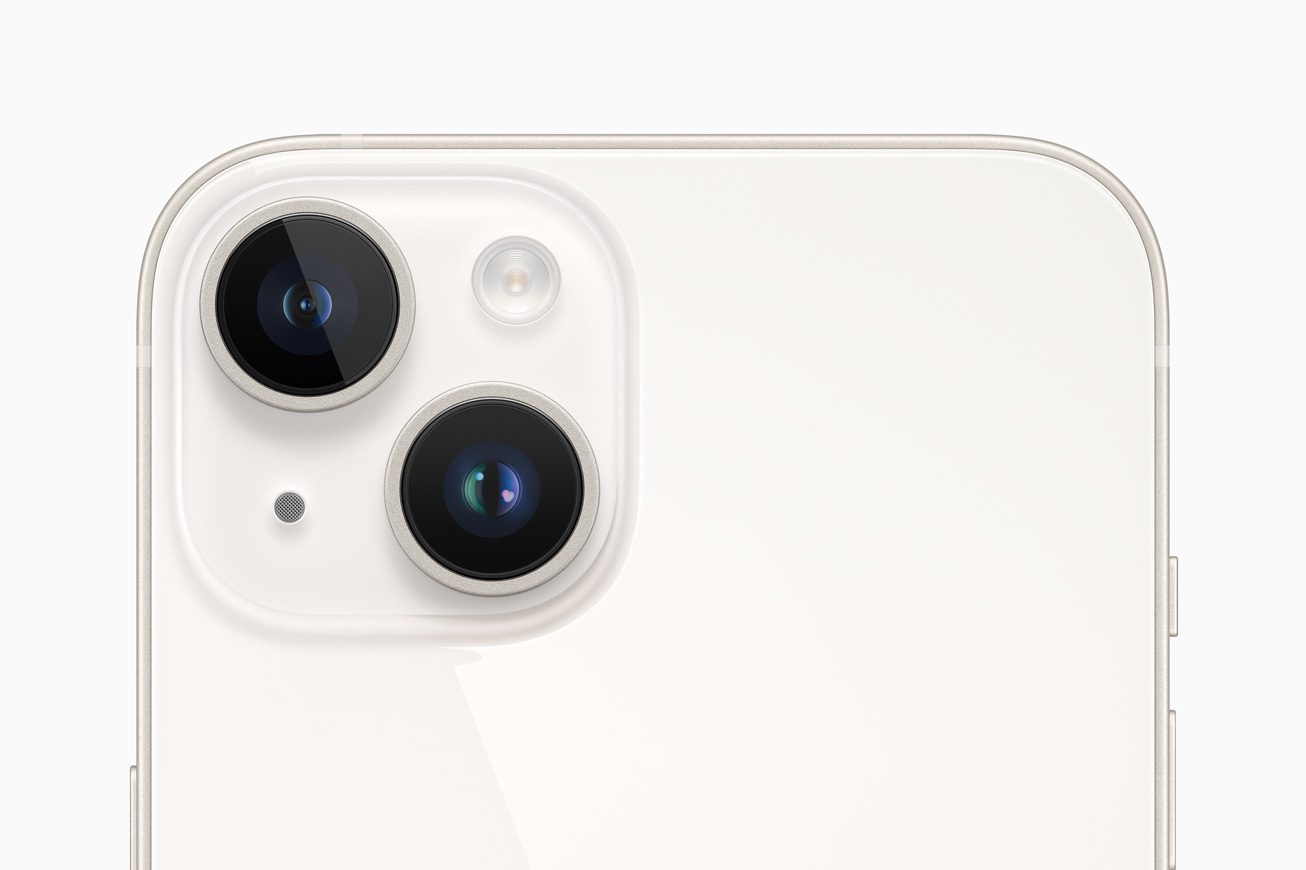Apple has introduced iPhone 14 and iPhone 14 Plus, featuring two sizes — 6.1 inches and 6.7 inches — with some serious camera upgrades and new safety capabilities. They run iOS 16, which will be available for all iPhone users on Monday, Sept. 12.
Their camera systems boasts new Main and front TrueDepth cameras, the Ultra Wide camera for unique perspectives, and Photonic Engine — an enhanced image pipeline. Both models include the A15 Bionic chip with a 5-core GPU.
What’s more, the iPhone 14 and iPhone 14 Plus introduce critical safety capabilities such as Crash Detection and Emergency SOS via satellite, a first in the industry. And with amazing battery life, industry-leading durability features, and super-fast 5G, this iPhone lineup is more advanced than ever before, according to Greg Joswiak, Apple’s senior vice president of Worldwide Marketing.

The iPhone 14 and iPhone 14 Plus will be available in midnight, blue, starlight, purple, and (PRODUCT)RED1 finishes. Pre-orders begin Friday, September 9, with availability for iPhone 14 beginning Friday, September 16, and availability for iPhone 14 Plus beginning Friday, October 7.
Design and battery life
The iPhone 14 and iPhone 14 Plus — which are powered by the 5-core GPU A15 Bionic processor — feature what Apple describes as an aerospace-grade aluminum design in five finishes. The larger display of iPhone 14 Plus is great for streaming movies and playing games, and iPhone 14 Plus boasts the best battery life ever in an iPhone, says Joswiak. Both models have an updated internal design for better thermal performance, gorgeous Super Retina XDR displays with OLED technology that supports 1200 nits of peak HDR brightness, a 2,000,000:1 contrast ratio, and Dolby Vision.
The iPhone 14 and iPhone 14 Plus also feature the durable Ceramic Shield front cover — exclusive to Apple smartphones and are protected from common spills and accidents with water and dust resistance.
Camera upgrades
The iPhone 14 and iPhone 14 Plus introduce pack a new 12MP Main camera featuring a larger sensor and larger pixels, a new front TrueDepth camera, the Ultra Wide camera to capture more of a scene, and Photonic Engine for improved low-light performance.

Joswiak says that, through a deep integration of hardware and software, Photonic Engine improves mid- to low-light performance for photos across all cameras: up to 2x on the Ultra Wide camera, 2x on the TrueDepth camera, and 2.5x on the new Main camera.
According to Apple, the Photonic Engine enables this dramatic increase in quality by applying the computational benefits of Deep Fusion earlier in the imaging process to deliver extraordinary detail, and preserve subtle textures, provide better color, and maintain more information in a photo. The tech giant says that dual-camera system upgrades and features include:
- A new Main camera with a larger ƒ/1.5 aperture and 1.9 µm pixels, enabling photo and video improvements in all lighting scenarios for better detail and motion freezing, less noise, faster exposure times, and sensor-shift optical image stabilization.
- A new front TrueDepth camera with an ƒ/1.9 aperture that enables better low-light performance for photos and video. Using autofocus for the first time, it can focus even faster in low light and capture group shots from farther away.
- A new Action mode for incredibly smooth-looking video that adjusts to significant shakes, motion, and vibrations, even when video is being captured in the middle of the action.
- The Ultra Wide camera, offering a unique perspective for wider shots and improvements to low-light photos with Photonic Engine.
- An improved True Tone flash that is 10 percent brighter and has better uniformity for more consistent lighting.
- Cinematic mode, now available in 4K at 30 fps and 4K at 24 fps.
- End-to-end Dolby Vision HDR, available only on iPhone.
Crash Detection and Emergency SOS via Satellite
The entire iPhone 14 lineup introduces safety capabilities that can provide emergency assistance when it matters most. With a new dual-core accelerometer capable of detecting G-force measurements of up to 256Gs and a new high dynamic range gyroscope, Crash Detection on iPhone can now detect a severe car crash and automatically dial emergency services when a user is unconscious or unable to reach their iPhone.
These capabilities build on existing components, like the barometer, which can now detect cabin pressure changes, the GPS for additional input for speed changes, and the microphone, which can recognize loud noises typified by severe car crashes.
Apple-designed motion algorithms trained with over a million hours of real-world driving and crash record data provide even better accuracy, per Joswiak. When combined with Apple Watch, Crash Detection leverages the unique strength of both devices to get users help efficiently.
When a severe crash is detected, the emergency services call interface will appear on Apple Watch, as it is most likely to be in closer proximity to the user, while the call is placed through iPhone if it is in range for the best possible connection.
The iPhone 14 lineup also introduces Emergency SOS via satellite, which combines custom components deeply integrated with software to allow antennas to connect directly to a satellite, enabling messaging with emergency services when outside of cellular or Wi-Fi coverage. Satellites are moving targets with low bandwidth, and it can take minutes for messages to get through. Since every second counts, with Emergency SOS via satellite, iPhone front-loads a few vital questions to assess the user’s situation, and shows them where to point their phone to connect to a satellite.
The initial questionnaire and follow-up messages are then relayed to centers staffed by Apple‑trained specialists who can call for help on the user’s behalf. This technology also allows users to manually share their location over satellite with Find My when there is no cellular or Wi-Fi connection. Emergency SOS via satellite will be available to users in the US and Canada in November, and the service will be free for two years.
Pricing and availability
- The iPhone 14 and iPhone 14 Plus will be available in midnight, blue, starlight, purple, and (PRODUCT)RED in 128GB, 256GB, and 512GB storage capacities.
- Customers in Australia, Canada, China, France, Germany, India, Italy, Japan, Singapore, Spain, Thailand, the UAE, the UK, the US, and more than 30 other countries and regions will be able to pre-order iPhone 14 and iPhone 14 Plus beginning at 5 a.m. PDT on Friday, September 9, with iPhone 14 availability beginning Friday, September 16, and iPhone 14 Plus beginning Friday, October 7.
- iPhone 14 will be available in Malaysia, Turkey, and 20 other countries and regions beginning Friday, September 23.
- Emergency SOS via satellite will be available starting in the US and Canada in November, and the service will be included for free for two years with the activation of iPhone 14 and iPhone 14 Plus.
- Customers can get iPhone 14 for $33.29 (US) a month for 24 months or $799 before trade-in, and iPhone 14 Plus for $37.45 a month for 24 months or $899 (US) before trade-in from apple.com/store, in the Apple Store app, and at Apple Store locations. iPhone 14 and iPhone 14 Plus are also available through Apple Authorized Resellers and select carriers.
- Customers can save up to $800 on an iPhone 14 and iPhone 14 Plus after trade-in directly from apple.com/store or at an Apple Store when they activate it with select US carriers. Terms apply. For eligibility requirements and more details, see apple.com/shop/buy-iphone/carrier-offers. Pricing for iPhone 14 and iPhone 14 Plus includes a $30 carrier instant discount that requires carrier activation.
- Customers in the US can get ready for iPhone 14 and iPhone 14 Plus pre-orders until 10 p.m. PDT on Thursday, September 8, by visiting apple.com/store or using the Apple Store app. They can choose to pay monthly or in full, add a trade-in credit toward their new iPhone, or upgrade through the iPhone Upgrade Program.
Article provided with permission from AppleWorld.Today

